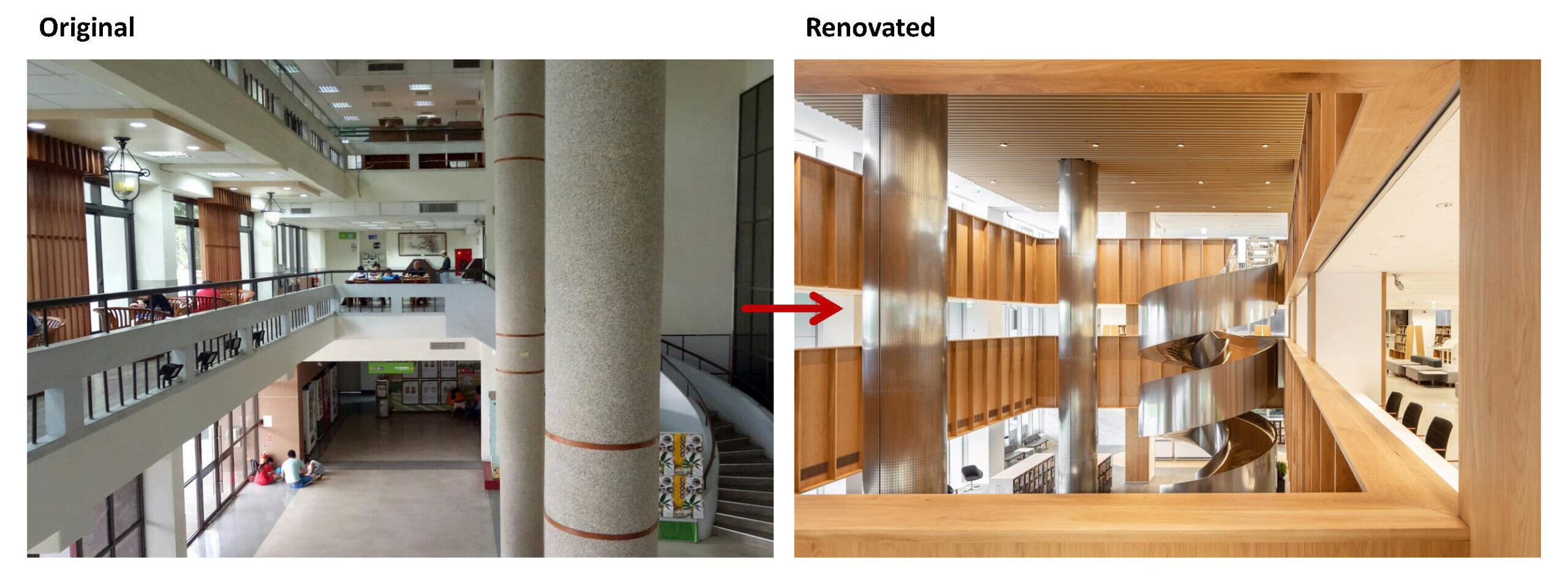Dear Architects: If You Really Want to Be More Sustainable, Start Prioritizing Reuse Projects
Architecture 2030’s mission is to rapidly transform the built environment from a major emitter of greenhouse gases to a central source of solutions to the climate crisis. For 20 years, the nonprofit has provided leadership and designed actions toward this shift and a healthy future for all. This article was written by Erin McDade and Lori Ferriss.
The latest reports from the Intergovernmental Panel on Climate Change (IPCC) are in, and the findings are clear: reusing and retrofitting our existing building stock is critical climate action. The Sixth Assessment Report names building reuse as one of the top strategies to mitigate climate change, stating that places with developed existing built environments will achieve “the largest GHG emissions savings by replacing, repurposing, or retrofitting the building stock.”
According to the IPCC, to have the best possible chance of meeting global climate targets, we must limit our remaining carbon budget to 340-400 gigatons of CO2 emissions. At a current average global emissions rate of approximately 40 gigatons per year, staying within this budget would require rapid decarbonization of every carbon-emitting sector, including the built environment, by 2040. This means achieving net zero across both operational emissions from using buildings and embodied emissions from constructing and maintaining them. Given such a short timeline, when assessing the best way to cut emissions in the building sector, we are compelled to think not just about how much carbon we reduce but when those reductions happen.

Pingtung Public Library by MAYU architects, Pingtung County, Taiwan Popular Choice, 10th Annual A+Awards, Architecture +Adaptive Reuse
While substantial new construction will be required to support a growing global population, and efforts are underway to deploy net zero operations and adopt low/zero embodied carbon materials and construction practices, most new buildings today come with a significant embodied carbon penalty as well as added operational emissions.
On the other hand, renovating an existing building typically saves 50% to 75% of the embodied carbon that would be emitted by constructing a similar new building, especially when the most carbon-intensive parts of the building, the structure and envelope, are reused. When coupled with critical operational decarbonization strategies such as improved energy efficiency, electrification, and on-/off-site renewable energy, building reuse represents the biggest bang for our carbon buck, especially in parts of the world with significant and/or underutilized existing building stocks.
Unfortunately, renovation rates lag behind IPCC-estimated requirements. Current global building stock renovation rates hover around 1% annually, but the IPCC estimates that decarbonizing the built environment in time to meet climate deadlines will require retrofit rates to increase to 2.5 to 5%, and perhaps as much as 10%, annually.

Pingtung Public Library by MAYU architects, Pingtung County, Taiwan Popular Choice, 10th Annual A+Awards, Architecture +Adaptive Reuse
The good news is that there are positive trends to accelerate building reuse on many fronts. To name a few: For the first time in the United States, AIA reported that architectural billings from reuse outpaced those from ground up construction. Funding opportunities are expanding from many sources, including the White House’s Inflation Reduction Act. The Pritzker Prize has recognized architects for exemplary stewardship of existing buildings in two of the past three years. David Chipperfield, this year’s laureate, states “Retrofit is not only the right thing to do, it’s the more interesting thing to do.”
Contributing to this trend is the expansion of tools and resources to support the planning, design and policymaking communities in assigning a value to the carbon-savings potential of building reuse. It has long been a truism in the building industry that “the greenest building is one that’s already built”, but despite this intuitive knowledge, the industry has lacked the ability to easily compare the variables of embodied and operating emissions over specific time frames for reuse and new-construction. This means that the potential avoided emissions associated with reuse are typically unaccounted for in design processes, owner requirements, and climate policies and regulations.

Pingtung Public Library by MAYU architects, Pingtung County, Taiwan Popular Choice, 10th Annual A+Awards, Architecture +Adaptive Reuse
Resources like the CARE Tool are paving the way for a significant uptake in building reuse as a climate solution. The tool, recently released by Architecture 2030, provides a user-friendly platform and easily accessible data to support key decision makers in understanding and quantifying the potential of building reuse to achieve dramatic carbon savings compared to demolition and reconstruction.
The benefits of reusing and improving existing buildings extend well beyond carbon reductions. For example, a strategic investment could leverage the millions of square feet of unoccupied or underutilized buildings to ease the record housing crises in the US and Europe. Investing in communities that have been subjected to historic discrimination in particular has the potential to bring equitable climate solutions that also have meaningful social and economic outcomes.
Carbon smart approaches to reuse will reduce habitat loss, deforestation and pollution, while strengthening neighborhood memory and identity, creating local jobs, building financial equity, increasing neighborhood resilience and empowering communities. The benefits are clear, and the time to act is now! Existing buildings are a key to a climate smart built environment. Let’s untap their potential to transform the existing built environment for a net zero future.

Pingtung Public Library by MAYU architects, Pingtung County, Taiwan Popular Choice, 10th Annual A+Awards, Architecture +Adaptive Reuse | Photo by Yu-Chen Chao
Erin McDade, Associate AIA, is Architecture 2030’s Senior Program Director. She leads the organization’s public policy and building reuse initiatives, focusing on developing data-driven solutions for building sector decarbonization.
Lori Ferriss, AIA, PE, is Goody Clancy’s Regenerative Renewal Practice Leader and Director of Sustainability and Climate Action, leading architecture projects and research investigations for premier educational institutions that are renewing heritage campuses while advancing climate action goals.



